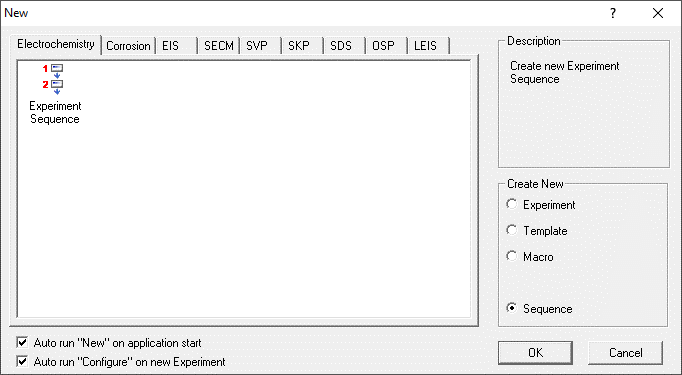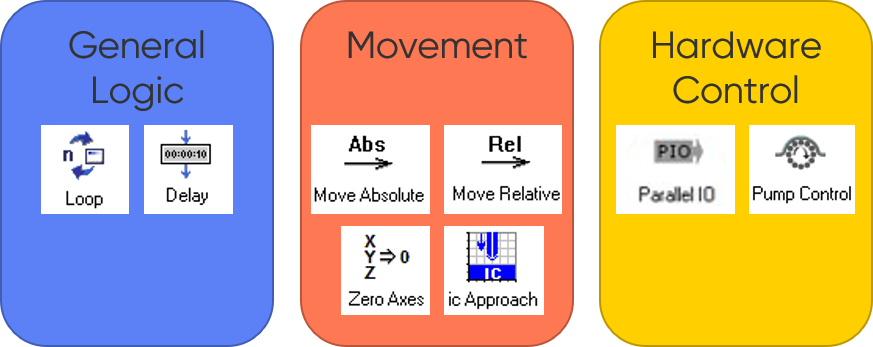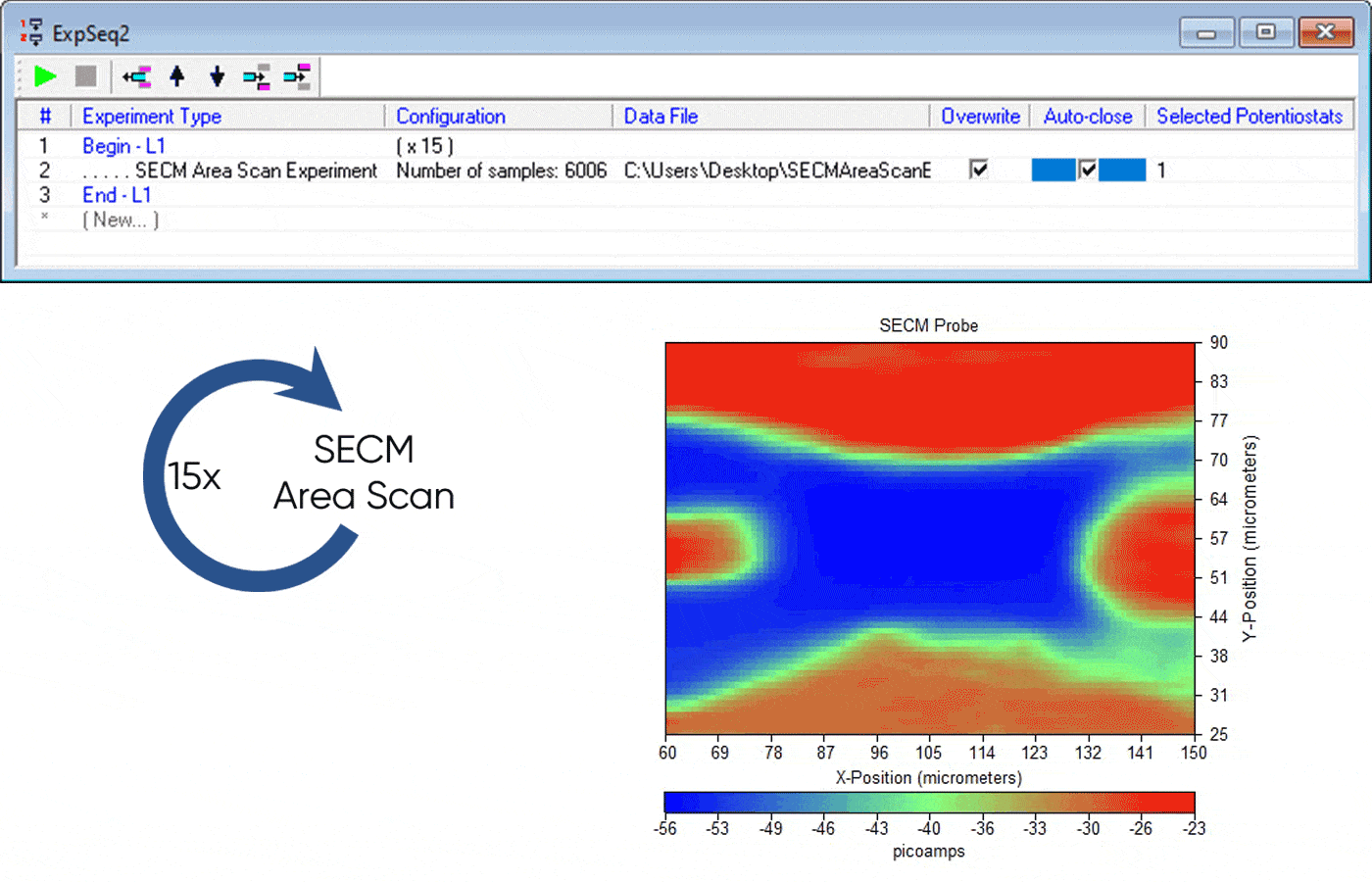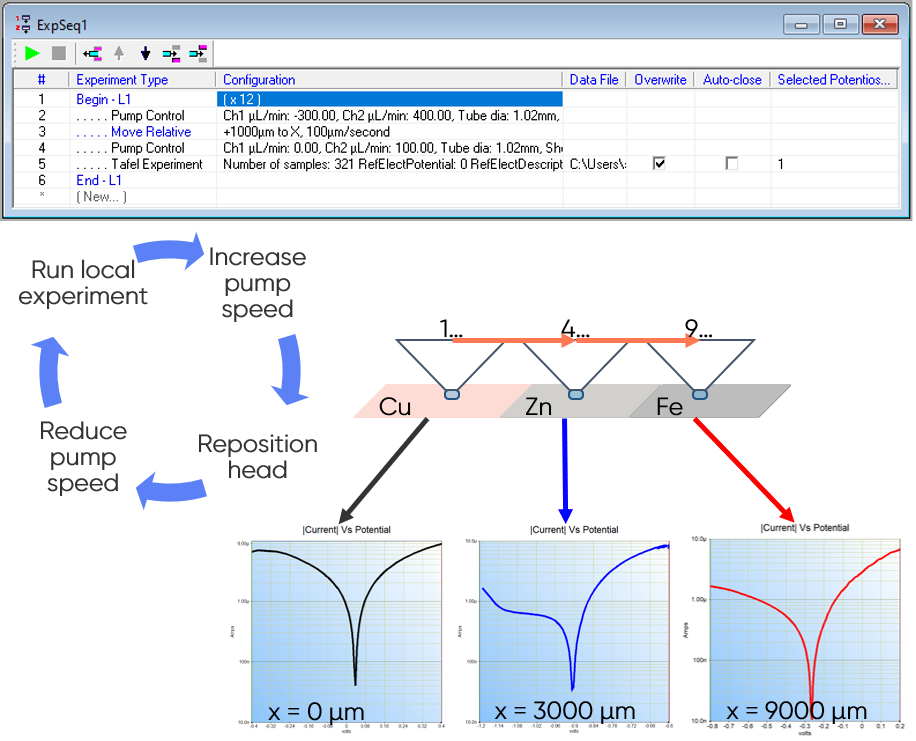How to automate experiments and build complex protocols: An introduction to the M470 sequencer
Latest updated: August 9, 2023Why use the experiment sequencer?
From within the M470 software it is possible to sequence experiments and logic steps using the experiment sequencer. The sequencer can be used with any available experiment in the software, from electrochemistry and Electrochemical Impedance Spectroscopy (EIS), to local electrochemical area scans. By using the sequencer researchers can easily automate their scanning probe electrochemistry experiments. The sequencer can be used for everything from basic loops of experiments to follow dynamic electrochemical processes, like corrosion, to more advanced experiment types, for example, to move the probe to different points on a sample to perform local electrochemical experiments as is used in some high throughput screening studies.
The sequencer is easily accessed from the M470’s New Experiment menu, Fig. 1, and gives users the capability to sequence any experiment available on their instrument.

Figure 1: The experiment sequencer is accessed from the New Experiment window in the M470 software.
Available steps
In its most basic form the sequencer can be used to create a list of distinct experiments for the M470 to work through. This automation is powerful in itself, as it removes the need for user interaction for lengthy experimental protocols, however the real potential of the sequencer is achieved through the logic steps available. These can be split into general logic, movement, and hardware control, Fig. 2.

Figure 2: The logic steps available for the experiment sequencer can be split into general logic steps, movement steps, and hardware control steps, as shown.
General logic
The general logic steps available to users are the options to loop experiments, and the option to add a delay step in. Using the loop option users can automatically re-run an experiment. This is particularly useful when interested in a dynamic process, like corrosion. By looping area scan experiments the change in local electrochemistry over an extended period can be easily compared at different points in time. Delays can be added to further control the time between experiments.
Movements
Movement steps available to users include absolute and relative movement, the option to zero axes, and when ic-SECM is available, the option to perform ic approach to the sample. Using these movement steps users can automatically run area scans at different locations on a sample surface. The movement steps can also be used to build more complex experiment protocols. For example, using the absolute and relative movement options, users can design experiments in which the probe automatically measures cyclic voltammograms at different points across the sample.
Hardware control
The M470 sequencer offers two options to control hardware. The first is the pump control option, which allows the flow rate and direction of both channels of the pump supplied with the SDS470 to be altered from within an experiment sequence. The second option is the Parallel IO option, which allows the USB-PIO to be used within a sequence. Using the USB-PIO it is possible to write to a port to interact with a connected device. This capability has been demonstrated in SCAN-Lab AN#15: Introduction to the USB-PIO: measuring the effect of light on a live leaf.
Examples
Using the sequencer to follow processes over time
The sequencer was used to follow the effect of darkness on a live plant leaf by using Scanning Electrochemical Microscopy (SECM) to measure the change in O2 concentration, after a spider plant (Chlorophytum comosum variegata) was put into darkness. To automate this experiment a loop of 15 SECM experiments in 0.1 x 10-3 mol·L-1 KCl, using a probe biased at -0.75 V, was configured and run, as illustrated in Fig. 3.

Figure 3: A sequence of looped SECM experiments used to measure O2 concentration at a plant leaf is shown, and illustrated. The resulting SECM scans are also shown.
Using the sequencer to build complex protocols
The sequencer was used to build an experiment protocol in which Tafel experiments were performed at different points across a Cu/Zn/Fe sample using the SDS flow head. To do this a four-step loop was built. In the first step the SDS pump speed was set ready for the head movement, the head was then moved to the point of interest, and the SDS pump speed was automatically slowed for the Tafel experiment performed. This loop was repeated 12 times to allow 12 different points across the Cu/Zn/Fe surface to be measured. This sequence is illustrated in Fig. 4.

Figure 4: A sequence of Tafel experiments performed with the SDS470 at different points across a surface is shown, and illustrated. A limited set of results from these measurements are shown.
Related products